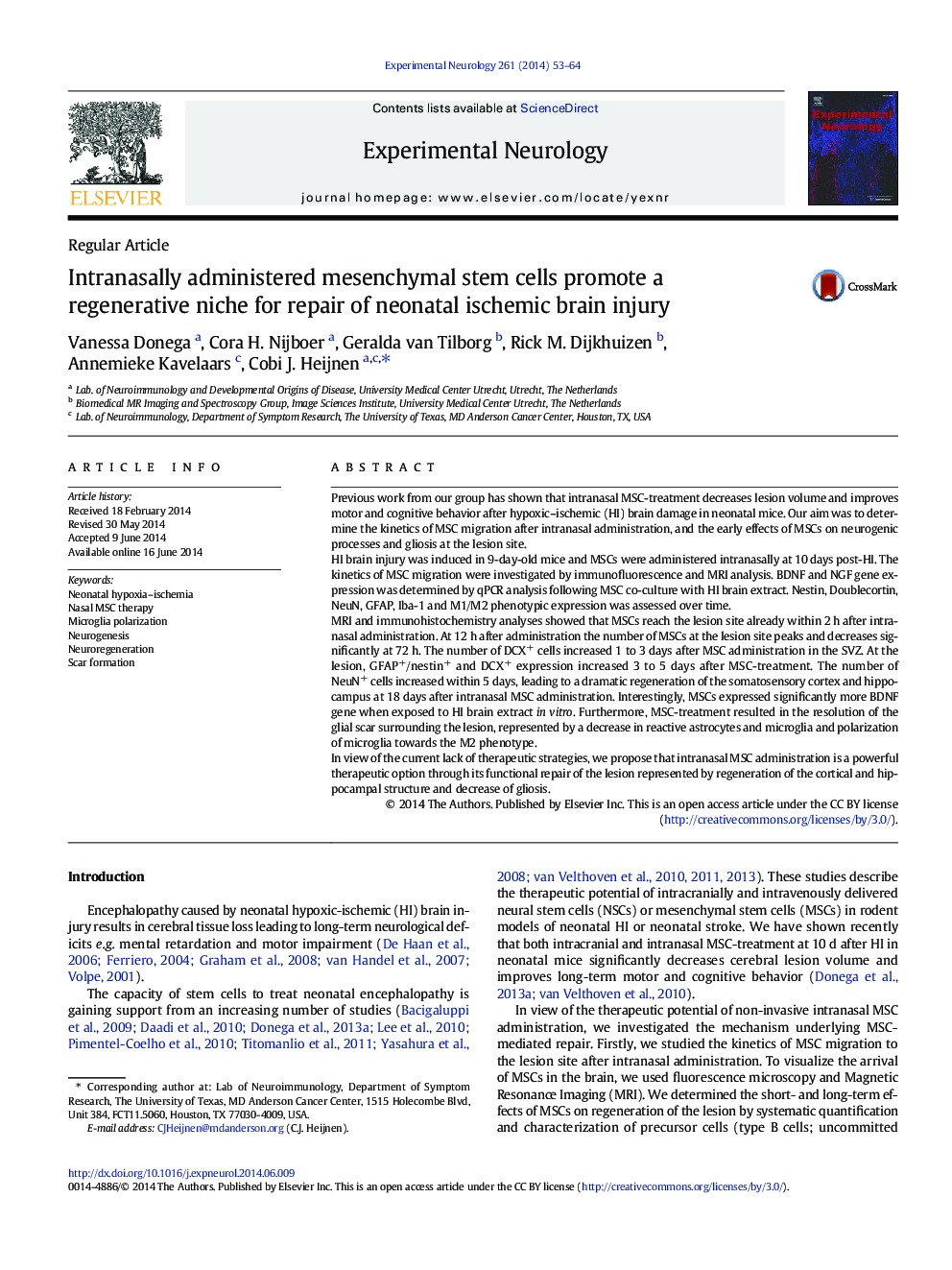| کد مقاله | کد نشریه | سال انتشار | مقاله انگلیسی | نسخه تمام متن |
|---|---|---|---|---|
| 6017596 | 1580171 | 2014 | 12 صفحه PDF | دانلود رایگان |
- MSCs promote endogenous neurogenesis resulting in lesion repair from 5 to 18Â days.
- Intranasally administered MSCs reach the ischemic lesion within 2Â h.
- MSCs promote resolution of the glial scar.
- The HI environment induces neurotrophic BDNF expression by MSCs.
- MSCs decrease HI brain injury by regeneration and not by prevention of damage.
Previous work from our group has shown that intranasal MSC-treatment decreases lesion volume and improves motor and cognitive behavior after hypoxic-ischemic (HI) brain damage in neonatal mice. Our aim was to determine the kinetics of MSC migration after intranasal administration, and the early effects of MSCs on neurogenic processes and gliosis at the lesion site.HI brain injury was induced in 9-day-old mice and MSCs were administered intranasally at 10Â days post-HI. The kinetics of MSC migration were investigated by immunofluorescence and MRI analysis. BDNF and NGF gene expression was determined by qPCR analysis following MSC co-culture with HI brain extract. Nestin, Doublecortin, NeuN, GFAP, Iba-1 and M1/M2 phenotypic expression was assessed over time.MRI and immunohistochemistry analyses showed that MSCs reach the lesion site already within 2Â h after intranasal administration. At 12Â h after administration the number of MSCs at the lesion site peaks and decreases significantly at 72Â h. The number of DCX+ cells increased 1 to 3Â days after MSC administration in the SVZ. At the lesion, GFAP+/nestin+ and DCX+ expression increased 3 to 5Â days after MSC-treatment. The number of NeuN+ cells increased within 5Â days, leading to a dramatic regeneration of the somatosensory cortex and hippocampus at 18Â days after intranasal MSC administration. Interestingly, MSCs expressed significantly more BDNF gene when exposed to HI brain extract in vitro. Furthermore, MSC-treatment resulted in the resolution of the glial scar surrounding the lesion, represented by a decrease in reactive astrocytes and microglia and polarization of microglia towards the M2 phenotype.In view of the current lack of therapeutic strategies, we propose that intranasal MSC administration is a powerful therapeutic option through its functional repair of the lesion represented by regeneration of the cortical and hippocampal structure and decrease of gliosis.
Journal: Experimental Neurology - Volume 261, November 2014, Pages 53-64
